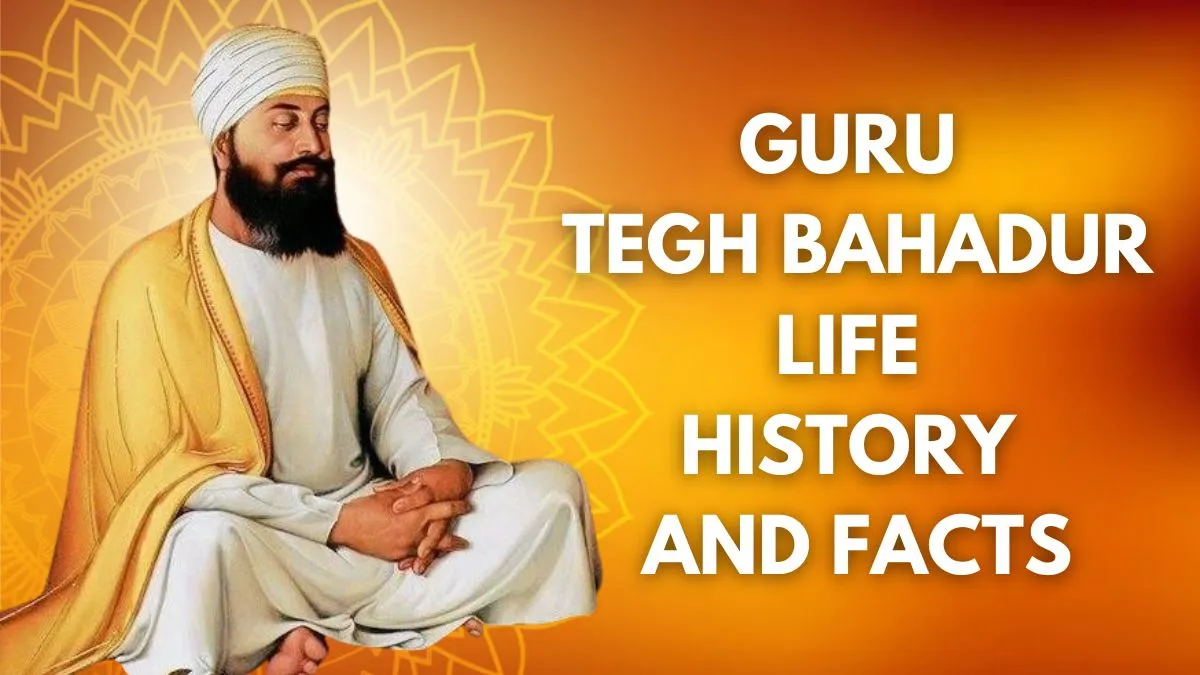- By Kashish Rai
- Sat, 23 Nov 2024 11:36 AM (IST)
- Source:JND
Guru Tegh Bahadur Martyrdom Day 2024: The Guru Tegh Bahadur Shaheedi Diwas or Martyrdom Day is observed every year on 24th November 2024. A pivotal event in Sikh history, Guru Tegh Bahadar's sacrifice had a profound impact on the future of Sikhism. As the ninth Sikh Guru, he gave his life to protect a fundamental human right: the freedom to practice one's religion without interference. His courageous act demonstrated the importance of standing up for one's beliefs and defending the rights of others. This event remains a significant milestone in Sikh history and a powerful symbol of the Sikh values of courage, conviction, and compassion.
To commemorate his Martyrdom, let us check out 7 lesser-known facts about the ninth Sikh Guru and honour his legacy:
Guru Tegh Bahadur Martyrdom Day 2024: 7 Lesser-Known Facts About The Ninth Sikh Guru
1. Early Life Of The Valiant Sikh Guru: Guru Tegh Bahadur was the youngest son of Guru Hargobind, the sixth Sikh guru, born in Amritsar on April 1, 1621. He was initially named Tyaga Mal. The mighty Guru was named Tegh Bahadur, meaning "Mighty of the Sword", after showing bravery in a battle against the Mughals. Growing up in Amritsar, the centre of the Sikh faith, Guru Tegh Bahadur was taught Sikh traditions, archery, and horse riding. He also studied ancient classics like the Vedas and Upanishads. In 1632, he married Mata Gujri. As the seat of the Sikh Gurus, Amritsar was a hub of Sikh activity, connected to Sikhs across the country through missionaries and representatives.
2. Stay At Bakala: In the 1640s, Guru Hargobind, his wife Nanaki, Guru Tegh Bahadur, and Mata Gujri moved to Bakala, Guru Hargobind's ancestral village. Bakala was a thriving town with many ponds, wells, and water reservoirs. After Guru Hargobind's death, Guru Tegh Bahadur stayed in Bakala with his wife and mother. This marked the beginning of a new chapter in Guru Tegh Bahadur's life, as he would eventually go on to become the ninth Sikh guru.
3. Guruship Of Guru Tegh Bahadur: When Guru Har Krishan, the eighth Sikh guru, fell ill with smallpox in 1664, he told his followers to find his successor in Bakala. However, many people in Bakala claimed to be the new guru, causing confusion among the Sikhs. A wealthy trader, Baba Makhan Shah Labana, was searching for the true guru. He tested each claimant by offering two gold coins, expecting the real guru to know about his vow to give 500 coins. When he met Guru Tegh Bahadur, the guru pointed out the shortfall, and Labana was overjoyed to have found the true guru. In August 1664, a Sikh gathering appointed Guru Tegh Bahadur as the ninth Sikh guru, with his brother Diwan Durga Mal leading the ceremony.
4. Works Of Guru Tegh Bahadur: Guru Tegh Bahadur made significant contributions to Sikh scripture, adding many hymns to the Guru Granth Sahib, including the Shloks at the end of the text. He travelled extensively throughout the Mughal Empire, establishing multiple Sikh temples in Mahali. His own compositions consist of 116 shabads and 15 ragas, while his followers, known as bhagats, created 782 bani compositions related to Sikhism. Guru Tegh Bahadur's writings, found in the Shri Guru Granth Sahib, cover various topics such as God's nature, human relationships, the body and mind, sorrow, dignity, service, death, and deliverance. His works provide valuable insights into Sikh philosophy and values.

Guru Tegh Bahadur, the ninth Sikh Guru, bravely sacrificed his life for religious freedom and human rights. (Image Source: Freepik)
5. Travels Of Guru Tegh Bahadur: Guru Tegh Bahadur travelled extensively throughout India to spread the teachings of Guru Nanak, the first Sikh guru. His journeys took him to places like Dhaka, Assam, Mathura, Agra, Allahabad, and Varanasi. Wherever he went, he shared Sikh doctrine and set up community water wells and langars, or community kitchens, to help the poor. Many of the locations he visited and stayed in have become Sikh temples. In 1664, he made three visits to Kiratpur, and later founded Anandpur Sahib in the foothills of the Himalayas. His travels and teachings attracted many followers, including soldiers and riders who opposed the Mughals, which eventually led to his execution in 1675.
6. Martyrdom Of Guru Tegh Bahadur: Every year on November 24, people remember Guru Tegh Bahadur's sacrifice. In 1675, he was executed in Delhi by Mughal Emperor Aurangzeb for refusing to accept Aurangzeb's rule. The sites of his death and cremation in Delhi have become sacred places, now known as Gurudwara Sis Ganj Sahib and Gurudwara Rakab Ganj Sahib. Guru Tegh Bahadur's contributions to the Sikh holy book, Guru Granth Sahib, are highly valued. Additionally, he played a significant role in maintaining the pride and dignity of the Indian community during the Mughal era, inspiring future generations to stand up for their rights and freedoms. His legacy continues to be celebrated and honoured by Sikhs around the world.
7. Memorials Of Guru Tegh Bahadur: Guru Tegh Bahadur was a brave Sikh leader who fought against the Mughal forces. He built Anandpur Sahib and rescued a group of Kashmiri Pandits from Mughal oppression. After his execution by Mughal Emperor Aurangzeb, several Sikh shrines were built in his honour, including Gurdwara Sis Ganj Sahib and Gurdwara Rakab Ganj Sahib in Delhi. Guru Tegh Bahadur, along with his companions Bhai Mati Dass, Bhai Sati Das, and Bhai Dayala, were martyred, strengthening the Sikhs' resolve to fight against Muslim rule and persecution. His martyrdom had a profound impact on his son, Guru Gobind Singh, who went on to establish the Khalsa identity.
(Disclaimer: This is based on general public information. Jagran English does not confirm its veracity. Before adopting any measures, consult an expert in the relevant field.)

